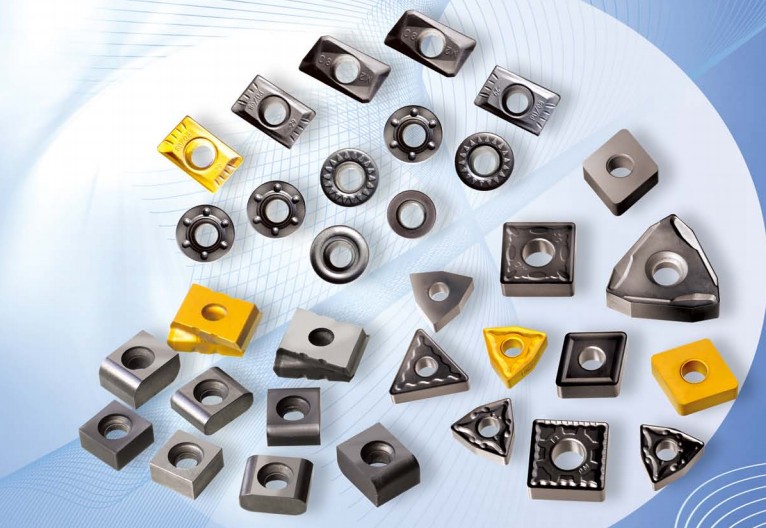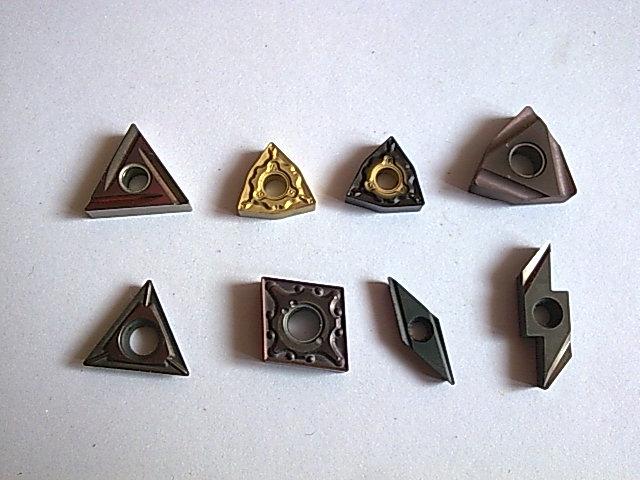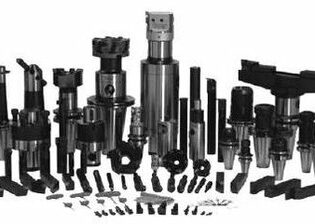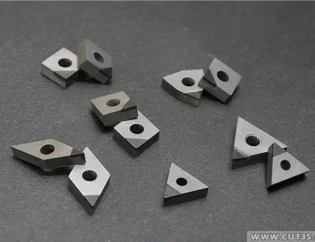
Tool Materials
Coated carbide tools involve coating wear-resistant materials such as TiN, TiCN, TiAlN, and Al2O3 onto carbide tools, with coating thickness ranging from 2 to 18mm. The function of coatings includes reducing friction, minimizing the generation of cutting heat, and having a low thermal conductivity to weaken the heat effect on the tool. Compared to conventional carbide tools, coated carbide tools exhibit significant improvements in strength, hardness, and wear resistance. For example, when machining workpieces with hardness between HRC45 and 55, coated carbide tools can achieve high-speed turning. Typically, CBN is suitable for machining hardened steel with hardness greater than HRC55, PCBN tools are suitable for workpieces with hardness higher than HRC60, and ceramic tools are more suitable for workpieces with hardness lower than HRC50. The cost of ceramic tool materials is lower than CBN, and ceramic tool technology in China is relatively mature with reliable blade performance. The bending strength and impact toughness of new types of carbide and coated carbide tool materials are higher than CBN and ceramic materials, and their prices are lower, making them suitable for processing hardened steel workpieces with hardness between HRC40 and 50.

1Cutting Parameters and Conditions
The rational selection of cutting parameters significantly affects hard turning. As the hardness of the workpiece material increases, the cutting speed should decrease. The appropriate cutting speed for hard turning finishing is between 50 and 200m/min, with a commonly used range of 100 to 150m/min. When using large cutting depths or interrupted cutting, the cutting speed should be maintained between 50 and 100m/min, with cutting depths typically ranging from 0.1 to 0.3mm. When high surface roughness is required, smaller cutting depths can be chosen, with feed rates typically ranging from 0.025 to 0.25mm/r, depending on the surface roughness values and productivity requirements. Due to the excellent heat resistance and wear resistance of PCBN and ceramic tool materials, higher cutting speeds, larger cutting depths, and smaller feed rates can be selected. However, the impact of cutting parameters on the wear of carbide tools is greater than that of PCBN tools, so it is not advisable to use higher cutting speeds and depths when using carbide tools.
2Hard Turning Machine Tools
Compared to turning non-hardened steel, turning hardened steel increases cutting forces by more than 50% and requires about twice the power. Therefore, hard turning imposes higher requirements on machine tools, such as system rigidity and power. To achieve surface quality comparable to grinding, radial and axial vibrations of the spindle must be kept within 2mm, and the machine must have a digital linear measurement system and good temperature compensation performance (micron-level compensation), while avoiding creep. In addition to ensuring high strength, the spindle system of the machine tool should also have high rotational speed to fully utilize the performance advantages of PCBN or ceramic tools, thereby ensuring the machining accuracy and efficiency required for continuous production.
Economic Benefits of Hard Turning
In the automotive manufacturing industry, most parts undergo final precision or shape machining after heat treatment, and hard turning is increasingly being adopted as an economical alternative to grinding. Currently, more and more foreign enterprises recognize the advantages of hard turning, while domestic practices still predominantly favor grinding, mainly due to the cost of tooling, which makes many companies view it as an expensive process.
1High Machining Efficiency
The cost of tools used in hard turning is generally 10 to 20 times higher than traditional turning tools, but compared to grinding, hard turning achieves higher machining efficiency. Hard turning often utilizes large cutting depths and high workpiece speeds, with metal removal rates typically three to four times that of grinding; the energy consumed is also only about one-fifth of grinding. Additionally, tool changeovers in hard turning can be completed within two minutes, compared to the 30 minutes or longer needed for grinding wheel replacements, without the need for correcting grinding wheel cutting profiles, thus minimizing production time losses associated with grinding wheel changes and corrections and ensuring high machine utilization rates.
2Lower Equipment Investment, Low Maintenance Costs, Suitable for Flexible Production Requirements
With equivalent productivity, lathe investment is only about one-third to one-tenth that of grinding machines, with lower auxiliary system costs. Lathes themselves are flexible machining methods with a wide processing range. For multi-variety small-batch production, modern CNC lathes equipped with various tool changers or tool magazines make it easy to switch between different workpieces, with quick workpiece clamping. Moreover, compared to grinding, hard turning is more adaptable to flexible batch production requirements. When turning, multiple surface machining (such as outer circles, inner holes, grooves, and end faces) can be completed in one clamping, resulting in short auxiliary times and high relative positional accuracy between machining surfaces. In contrast, grinding requires multiple installations or processes.
3Hard Turning Provides Excellent Surface Finish Quality for Parts
Although grinding can achieve good surface smoothness at relatively high feed rates, hard turning with PCBN inserts can achieve the same or better surface smoothness at significantly higher metal removal rates. Most of the heat produced during hard turning is carried away by the chips, avoiding surface burns and cracks commonly associated with grinding, resulting in excellent surface finish quality, precise machining roundness, and guaranteed surface accuracy.
4Hard Turning is a Clean Machining Process
Hard turning effectively removes metal by “peeling” softened chips from the workpiece. In most cases, hard turning does not require coolant, and using coolant can adversely affect tool life and surface quality. Since hard turning involves annealing the shear portion of the material to soften it for cutting, excessive coolant rates can reduce this effect caused by cutting forces, leading to increased mechanical wear and shortened tool life. This helps eliminate the problems associated with coolant use, reducing the cost of waste liquid treatment. Meanwhile, hard turning eliminates the need for coolant-related devices, reducing production costs, simplifying production systems, and producing clean and clean chips that are easier to recycle than grinding.
Development of Hard Turning
In the automotive industry of developed countries such as Germany, various shaft and sleeve parts are mostly processed using hard turning technology with good results. Due to the requirement for the best combination of machine tools, tools, fixtures, and processes, as well as insufficient promotion of the effectiveness of hard turning, the application of hard turning technology in China is not yet widespread. Currently, only a few enterprises are machining hardened.









